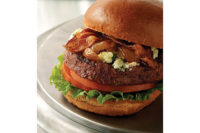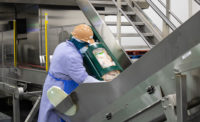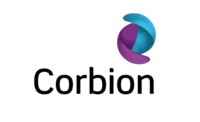There is a growing trend for food manufacturers to produce more meat and meal products that are restaurant- or even gourmet-quality. The success of this trend has in many cases depended on manufacturers recruiting seasoned, successful master chefs to their high-volume production kitchens to work as executive chefs and new product developers.
“Although I have a great love of the gourmet restaurant kitchen, I saw the opportunity to work at Sandridge as a chance to help bring a new level of quality and freshness in products that the general public can enjoy,” says Chef Mike Matranga, new product development manager at Sandridge Food Corporation. “For their part, Sandridge decided to put a chef in the kitchen to create recipes and flavors the correct way, so that other chefs want to buy their products.”
Matranga, a chef who trained in Europe, says food processors are beginning to recognize that culinary artists like him play a vital role in the conception and preparation of high-quality food products.
Of course, chefs such as Matranga who move from the bistro to the production environment have to make adjustments, including broadening their viewpoint to include high-volume manufacturing equipment.
Food equipment manufacturers must help identify the food processors’ goals and translate them to the engineering team – deciding what needs to be modified, or in some cases radically changed, to most effectively achieve the specifications requested. This can be adjusting the targeted equipment to suit the customer’s needs, applying another process entirely or the creation of a brand-new machine.
Chef Mike Matranga found the mass production environment is totally different from the kitchens in which he’s worked, particularly in terms of the equipment used and the scale of production.
Matranga says two factors helped him successfully adjust: his ability to find new or temporary uses for equipment, which is a common “makeshift” requirement of even the finest restaurant kitchens; and his ability to collaborate on the design of production equipment, including working with in-house technicians and those of equipment manufacturers.
“In some cases, we work with the engineers right at the equipment factory,” Matranga says. “For example, at Unitherm we bought a grill that featured a steam searing option. I told their engineers that I needed the equipment to steam all the way across so that it could be used for a project I’m working on. So, they customized the steam manifolds accordingly. They work with you to conform the equipment to your needs.”
Unitherm manufactures a wide variety of thermal processing equipment, including direct flame grills and spiral ovens, which are included along with other advanced continuous cooking solutions at its test kitchen facilities.
Matranga thinks some equipment manufacturers are very proactive in developing systems that are essential for producing restaurant-quality foods with a high level of efficiency.
“Here again, Unitherm can serve as an example,” he says. “They have a piece of equipment that is a combination oven. Their engineers know color development is crucial, specifically on products in CPET trays such as scalloped potatoes and lasagna. So they’ve engineered a specific design that allows penetration across the surface of the product for color development and browning, further the same equipment can be used for pasteurization.” NP
To see Unitherm Food Systems in action, visit representatives at IPPE Jan. 26-28, 2017, Booth B6837, in Atlanta. For information, contact: Unitherm Food Systems at (918) 367-0197 or via unitherm@unithermfoodsystems.com.






Report Abusive Comment